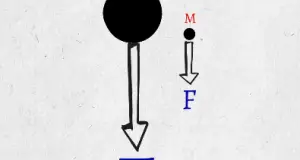What will Happen if there is a Vacuum Leak?
Ever wondered what does a check engine light indicates? If it is on, it doesn’t mean your tire pressure is not right or your windshield wipers are dysfunctional. What it tells is you is that there is something wrong with your engine performance, such as a vacuum leak. That’s the sole purpose of this light. So what can a vacuum leak cause?
If your car is showing a check engine light, there is no need to panic. Not yet. It may be indicating a vacuum leak. So, we will see today what causes a vacuum leak? What can a vacuum leak cause?
What is a Vacuum Leak?
How can a car have a vacuum leak? It doesn’t have a built-in vacuum cleaner or something, right? Your car runs on a big vacuum pump called an engine. The constant movement of pistons up and down creates a vacuum. Only the set amount of air must enter the engine, which is controlled by the ECU.
What a vacuum leak means, in automotive terms, is that the fuel-to-air ratio of your car’s engine is disturbed. It means the required amount of air is not entering the engine cylinders, or maybe it is escaping the cylinder when pistons move upwards. Either way, it is a problem and needs a solution.
In this situation, the amount of fuel injected into the cylinders stays the same as the car’s electronic circuits provided, but the amount of air has increased. It thus leads to lackluster low-speed performance and erratic idling.
What Causes a Vacuum leak and What can a Vacuum Leak Cause?
Below are listed the possible reasons for why a vacuum leak can occur and what will happen if it is not fixed in time.
1. Intake Snorkel
All that ratio and circuitry talk might make you think that this is a complicated problem. But it is not. You don’t even have to go to a workshop for this. A vacuum leak is caused by cracking of intake rubber pipe (snorkel) that connects the engine air intake and the air filter. These pipes are made from hard plastics, which can get brittle over time and might crack when twisted. You can fix the vacuum leak by simply checking the boot or plastic duct. Once you have located the crack, just buy a new one and replace it. It can cost you between $25 to $65 to buy a new snorkel.
2. Intake Manifolds and Gaskets:
Engine heads are usually bolted with plastic gaskets in between. These gaskets keep the system air and watertight. The intake manifold is also bolted to the engine head with a gasket in between them. Over time, gaskets harden and crack, losing their soften and flexibility. This causes a vacuum leak and thus reduces your vehicle’s [performance. This is a common problem with Toyotas, ford, and GMs.
To repair the problem, just unbolt the manifold and replace the bad gasket or O-ring. We prefer you hire a professional for this task as it requires experience. Gaskets and O-rings are inexpensive, costing $20-$60, but the labor is expensive, ranging from $150-$450.
3. EGR Valve:
In some high-end car models, EGR valves are fixed, which helps lower combustion temperatures at high speeds. These valves connect the intake manifold with the exhaust system and allow a small number of exhaust gases to enter the engine. Often, the valve is stuck open and thus causes exhaust gases to enter the cylinders. The symptoms of a stuck valve are the same as that of a vacuum leak. Fortunately, the problems associated with the EGR valve are easier to notice after during on a highway. For instance, a car might stall when exiting the highway.
It can cost you $50-$300 to buy a new EGR valve, and replacing it might cost $90-$300.
4. Brake Booster:
A brake booster is a device that exists between the brake pedal and the brake master cylinder. The engine vacuum operates it in most cars. A vacuum diaphragm inside the booster causes a vacuum leak when it rips or cracks. The symptoms of a bad booster are very straightforward. You will hear a hissing sound from the brake area if there is a leak or your light experience a lack of brake assist.
You must replace a bad brake booster as it is dangerous to drive with a leaking booster.
5. Plastic and Rubber Vacuum Hoses and Lines:
With time, vacuum hoses crack and break. As they are made from hard plastics, they become brittle over time. The most commonly breaking hoses are those that PCV system to the intake manifold. Crankcase vapors contain oil that damages the rubber or plastic casing cracks and breaks. Locate the faulty hos pipe and replace it. It is inexpensive to buy, and no requires no labor.
What can a Vacuum Leak Cause- Things to Avoid
- As mentioned above, the plastic hoses get brittle over time and become vulnerable to cracking. Whenever you are doing some work on the engine, be gentle with these pipes. Try not to twist them as they might crack.
- When diagnosing the vacuum leak at home, never use flammable liquids to spray on the running engine or pipes. The running engine is very hot and might start a fire which can lead to a bigger explosion. Many people use brake oil to spray on the plastic hoses in order to locate the leaks.
Summary
As you have seen, you can fix most of the problems mentioned above. What can a Vacuum Leak Cause?
Diagnosing a vacuum leak by yourself is not always easy. If you think you have a vacuum leak in your car, then most probably someone has already experienced the same problem before. So, it is always a good idea to go check on the internet. There are tons of videos available on YouTube and information on Google which can help you do it efficiently.
But if you don’t like doing this yourself, just go to a garage. Mechanics use scan tools to locate leaks. They can use sprays or vacuum gauges. When locating a vacuum leak in the manifold, they also use a machine called the smoke machine. The smoke machine produces a vapor which is introduced inside the manifold. After some time, the leak becomes visible by vapor coming out of the leak area.




